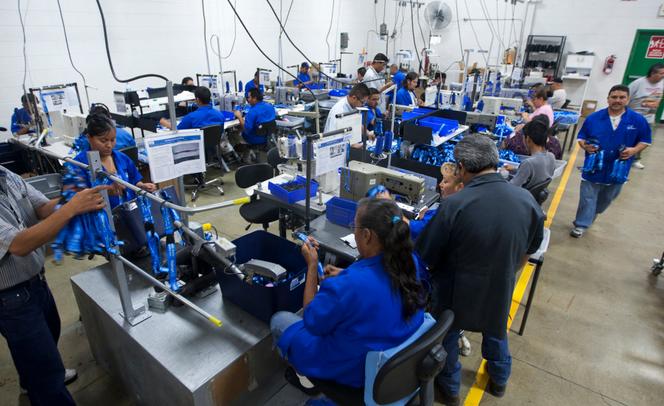


Mexican President Claudia Sheinbaum wants to believe it's still possible to reason with Donald Trump, presenting him with "simple data" on the consequences for the US of imposing a tariff on Mexican – and also Canadian – imports on his first day in office. So, on Tuesday, November 26, she wrote to Trump, using striking examples: "Among Mexico’s main exporters to the United States are General Motors, Stellantis, and Ford Motor Company, which arrived in Mexico 80 years ago. Why impose a tariff that would jeopardize them?" she read from the missive at her daily press conference.
On X, Mexican economist and professor at the TEC de Monterrey (ITESM) Mario Campa recalled that "imposing tariffs on [Mexican] cars and car parts would hit Detroit [Michigan] industry hard, when it is already fighting to survive in the face of the Chinese threat." Mexico's automotive sector itself is at risk. It accounts for 20 million direct and indirect jobs and has grown at an annual rate of nearly 9% over the last five years, largely thanks to American investment.
The two economies have been literally intertwined since the signing of the 1994 North American Free Trade Agreement (NAFTA), which became the Canada-US-Mexico Agreement in 2020. This interdependence has grown steadily over the past 30 years, particularly along the 3,000-kilometer border where a large part of North America's GDP is produced.
In the cities along the border, the landscape alternates between industrial zones and queues of trucks waiting at crossing points. These clusters – automotive in Ciudad Juarez (Chihuahua), electronics for Tijuana (Baja California) – were set up within the maquiladora system. Established in Mexico since 1965 and benefiting from tax and customs exemptions, these assembly plants work for 1,200 multinationals and produce 60% of Mexico's exports to the US, according to data from the National Association of Maquiladoras (INDEX). Half of these exports are in the automotive, truck and semiconductor sectors.
At the same time, Mexico has benefited from the phenomenon of nearshoring, the strategy of outsourcing to countries in close geographical proximity. Thanks to a now-qualified workforce at lower cost than in China, Mexico has built up an industrial ecosystem for aeronautics, electronics and new technologies. This relocation was further reinforced by the January 2023 decision from outgoing President Joe Biden, to include Mexico and Canada in the Chips and Science Act – an economic aid package to support local semiconductor production.
You have 37.15% of this article left to read. The rest is for subscribers only.
